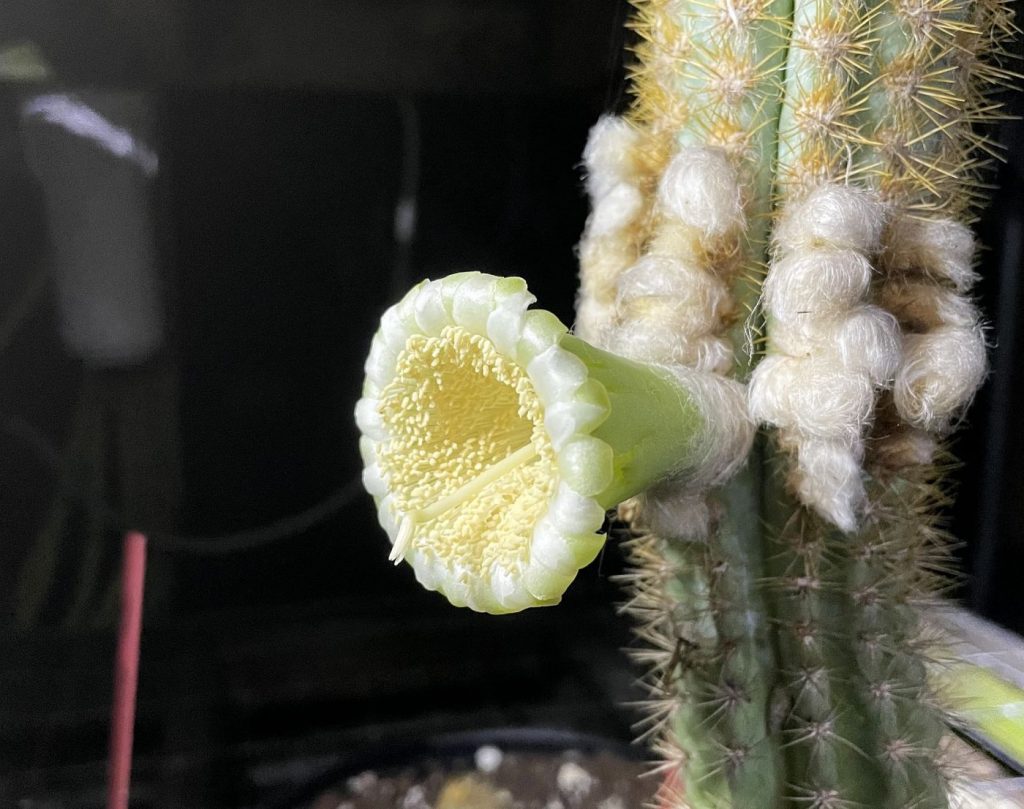Alex Harris | (TNS) Miami Herald
MIAMI — Key Largo has a new, disturbing and first-of-its-kind graveyard. There are no headstones, no burial markers, no names, no bodies.
It’s the last place an incredibly rare species of tree called the Key Largo tree was seen alive, back in 2023. The killer? All the clues point to climate change.
At least, that’s what a newly published paper suggests. Scientists have been watching this particular stand of cacti — known for their height (up to 20 feet) and brown hairlike puffball they grow around their flowers — since the 1990s.
At the time, researchers determined that a two-acre patch in John Pennekamp State Park was the only population in the U.S. of Pilosocereus millspaughii, an offshoot from the larger Caribbean population of the cactus.
But as of last year, the very last of the bunch is gone. And researchers believe sea level rise was the main culprit — rising tides and groundwater turning the soil too salty for the plant to survive. It appears this local extinction (also known as extirpation) could be the first climate-driven demise of a species in the United States.
“As far as we know, from any published research we can find, this is the first case we can find,” same James Lange, lead botanist with Fairchild Tropical Botanical Gardens and co-author of the study, which was published Tuesday in the Journal of the Botanical Research Institute of Texas.
“It was tragic to see as we monitored this over the years,” he said. “It was a big, old beautiful plant, one of the things that makes the Keys unique. And we’ve lost it.”
While the unique tree cactus may be the first recorded species to go locally extinct due to sea level rise in the U.S., plenty of other species are threatened too. And some on the same key.
Last year, a new study found that the endangered silver rice rat, which calls the Florida Keys home, shifted its population along with the rising tide. Researchers strapped telemetry collars to the tiny critters and tracked their movements. Over 17 years, they discovered the rats of three separate islands in the Keys shifted to higher elevations as seas rose in the area. If seas continue to rise, the rice rats could be left with nowhere to live.
Another study, from University of Miami researcher Taylor Alexander in 1976, explicitly pointed to sea level rise as the reason why slash pines could no longer exist on Key Largo. The soil was just too salty, he found.
George Gann, executive director at the Institute for Regional Conservation and co-author of the study, said these stories are examples of the threats sea rise can bring to bear, but they’re also an opportunity for scientists to collaborate and figure out how to save imperiled species before it’s too late.
“This is kind of the stake in the ground where we will see many other species lost to the impacts of climate change and sea level rise. And that is indeed sad,” he said. “This is the game. We have to figure out how do we stop the incredible loss of species and move to a position of ecological restoration.”
A disappearing act
Scientists started watching the tiny strand of cacti, located in an outcrop within John Pennekamp State Park, closely around 2007, by which time the trees had already survived multiple hurricanes, including the quadruple-whammy of 2005.
By 2015, the population was on the decline. Only 60 plants were recorded in that year’s annual survey, half as many as researchers spotted in 2013.
By 2016, only 28 plants remained, and animals like raccoons and birds were chomping on the few survivors. It was the only year scientists noticed so many bite marks, and they wondered if it could be because high tides could have drowned most of the freshwater puddles those animals rely on for clean drinking water, so they turned to juicy, water-filled cacti instead.
“Perhaps due to these tidal influences, freshwater resources may have been limited at the time,” Lange said. “We see this potential correlation.”
Hurricane Irma, which walloped the island chain in 2017, struck another decisive blow with 1.5 feet of storm surge over the area. And by 2019, the colony was all but dead. And for the first time, scientists noted, salty king tides were now within a few inches of the base of the cacti. During that time, a neighborhood on the same key had standing water on its roads for three straight months. The spot where the cacti lived was at an even lower elevation.
“We weren’t able to visit the population during this time, because the island was flooded,” Lange said.
A rescue effort
The Key Largo tree cactus (Pilosocereus millspaughii) is believed to be is the first local extinction of a species caused by sea level rise in the country. (Courtesy of Susan Kolterman/TNS)
The sight of the yellowing, withering and felled cacti moved scientists to action. They rescued what they could: cuttings sliced off their decaying parents and seeds from the pulpy, magenta fruit.
Today, they’re proud of the three dozen fragments, 25 seedlings and more than 1,000 seeds they have saved. The survivors are split between Fairchild Gardens and John Pennekamp State Park.
But it wasn’t enough to resuscitate a dying species, at least, not on this solo patch of land.
Last July, researchers went back to the site. They found a single cactus, a little over a foot tall, surrounded by limestone exposed by encroaching, salty seas and a new surrounding crop of mangroves and other salt-tolerant plants.
They cut down the sole survivor and took it back to the nursery, where they thought it would have a better chance of survival.
These species aren’t just threatened by sea level rise, which is gradually increasing along the entire Florida coast, but by “pulse events,” Gann said.
“It’s the king tides. It’s the storm surge from hurricanes that does not drain off as fast as it used to. Because of the speed of sea level rise, you don’t have the nice gradual shift in habitats you have on barrier islands,” he said. “That’s not what we’re seeing, we’re seeing overwash, we’re seeing complete transformation.”
That makes it tricky, but not impossible, for scientists to try and replant the salvaged snippets of the tree cactus.
The plan is to find some open land in Key Largo in the next few years and replant the fragments botanists are currently cultivating. It could buy the species “five, ten, thirty years,” Gann said.
“It can be quite difficult to find the perfect place where a plant that wasn’t there before can survive,” said Alan Franck, collections manager for the Florida Museum of Natural History and co-author of the study.
_____
©2024 Miami Herald. Visit at miamiherald.com. Distributed by Tribune Content Agency, LLC.


